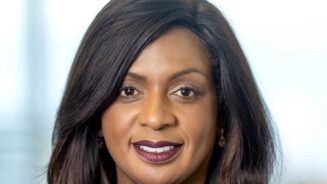At a Woman in Investing briefing on Tuesday, the all-female speakers and predominately female audience took a long, hard look at what is holding women back when it comes to investing.
Across every age bracket, women are more risk-averse than men, said panellist Jessica Exton, behavioural economist at ING.
“In our research, when we ask men and women about their finances, women are more likely to say they do not know the answer to the question.
“This might reflect a lack of confidence,” Exton said. “When people cannot choose to opt out of giving an answer, both men and women are more likely to answer questions correctly, with the gender difference shrinking.”
Media bias
Fellow panellist Anne Boden, chief executive of digital bank Starling Bank, said her company conducted research into the language used around finance in the consumer press.
The results were depressing:
- 65% of articles define women as excessive spenders, advising them to limit shopping ‘splurges’, save small sums or depend on financial support.
In contrast,
- 60% of financial articles in male magazines tend to speak to men as if they’re savvy financiers, offering advice on the best tech to use to enhance their investments.
Not placing the blame entirely at the feet of industry, Boden called on women to be less self-deprecating when talking about their finances and encouraged them to speak more openly with friends and family about money.
Not a scary place
Investment app Moneybox’s head of marketing, Charlotte Oates, told the audience that “less than one in four of our investors is female”.
Most of Moneybox’s clients are under 35, “so it’s a pretty young demographic”, she said, highlighting that it is a pervasive issue not just confined to older generations.
“Education is a big problem, I don’t think there’s a lot of help for the majority of people. If you’re 27 and you want to buy a house, there’s no one who’s going to tell you ‘OK, open an ISA and set aside money every week’,” Oates added.
She emphasised that the perception of investing is very different from ‘The Wolf of Wall Street’, “it’s just about giving your money the best possible chance to grow”.
Where are the women?
Coming from a private wealth management background, Indre Butkeviciute was frustrated that her team represented only one female client.
This prompted her to set up her own business, Lily Advisory, which focuses on financial education for women.
After conducting some research, Butkeviciute found “there is very clear wealth growth for women, with them pursuing careers more than they used to and taking over family wealth”.
But something is still holding them back in terms of investing that wealth.
One of the key reasons for this, she said, was a lack of financial education. “A study in the UK found that women are just not feeling confident about their money management.”
She said that when women are asked to describe the finance industry, they tend to use very negative words such as “complicated”, “unwelcoming” and “patronising”.
Butkeviciute says there are three key factors that are important for women:
- Transparency and education;
- Goals and priorities; and,
- Communication.
While these points are not necessarily different from what men want, the general consensus among the speakers was that women:
- Will readily admit they lack financial expertise;
- Want to fully understand the whole picture before making a decision;
- Are more likely to hold assets and not want to make a lot of changes; and
- Are stuck in a low savings and low return cycle.
Adviser opportunity
So, how can advisers change the conversation to make investing more appealing for women?
ING’s Exton said that research showed that women were more likely to invest as a means of “securing their money, rather than risking it”.
“Women are much more likely to agree with the statement ‘investing as a tool to safeguard their money’ rather than ‘using investing as a means to make it big’.
Talking about “high risk” and “high reward” is not necessarily relevant for women, she said.
Diversity
Greater numbers of female advisers could go some way to closing the gap, as people tend to build rapport more easily when talking to someone of a similar background, ethnicity, age group and gender.
But it is not the only solution and there is no reason that male advisers cannot amply meet the needs of female clients. Many already do.
Working to better understanding the goals, concerns and attitudes to risk of female clients could open up a whole new world for advisers.
The Women in Investing briefing was hosted by communications specialists MHP on 17 July.




